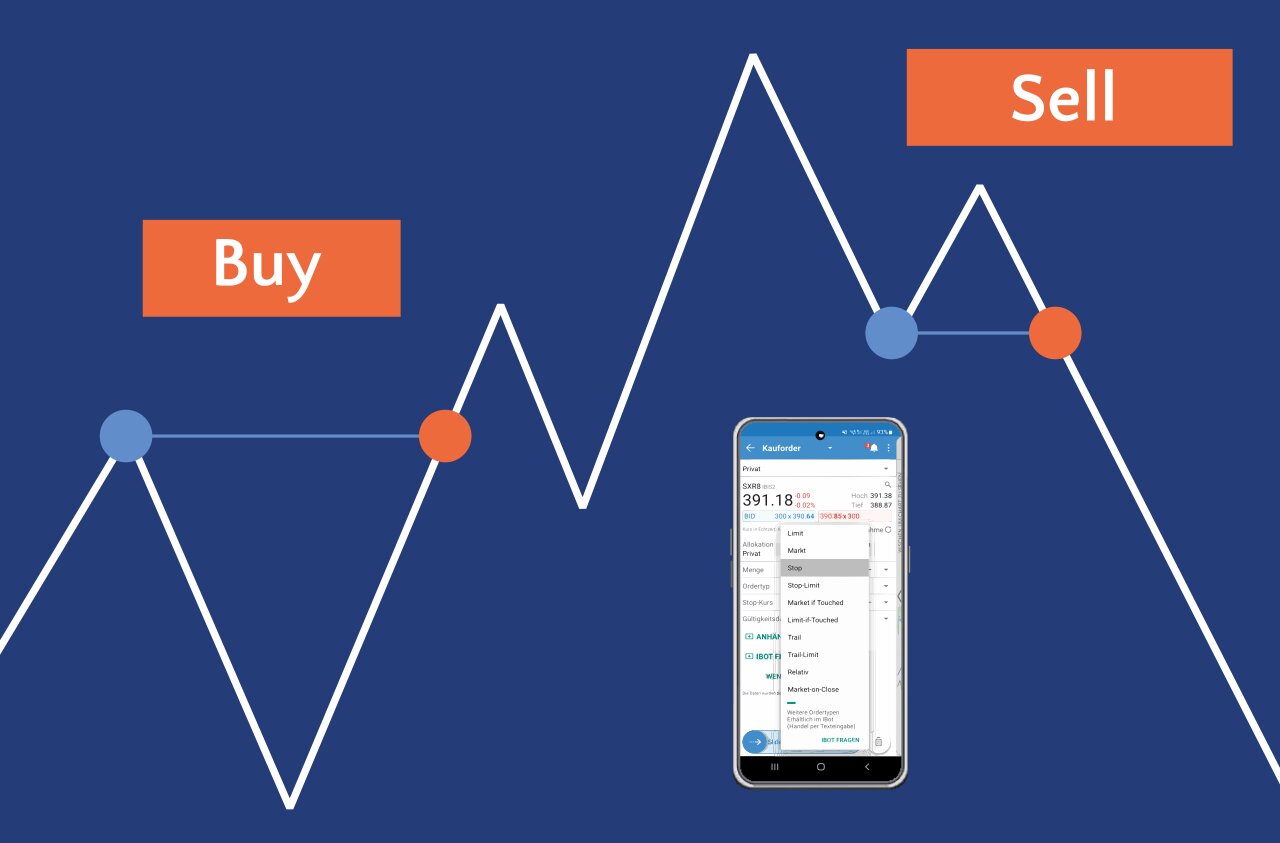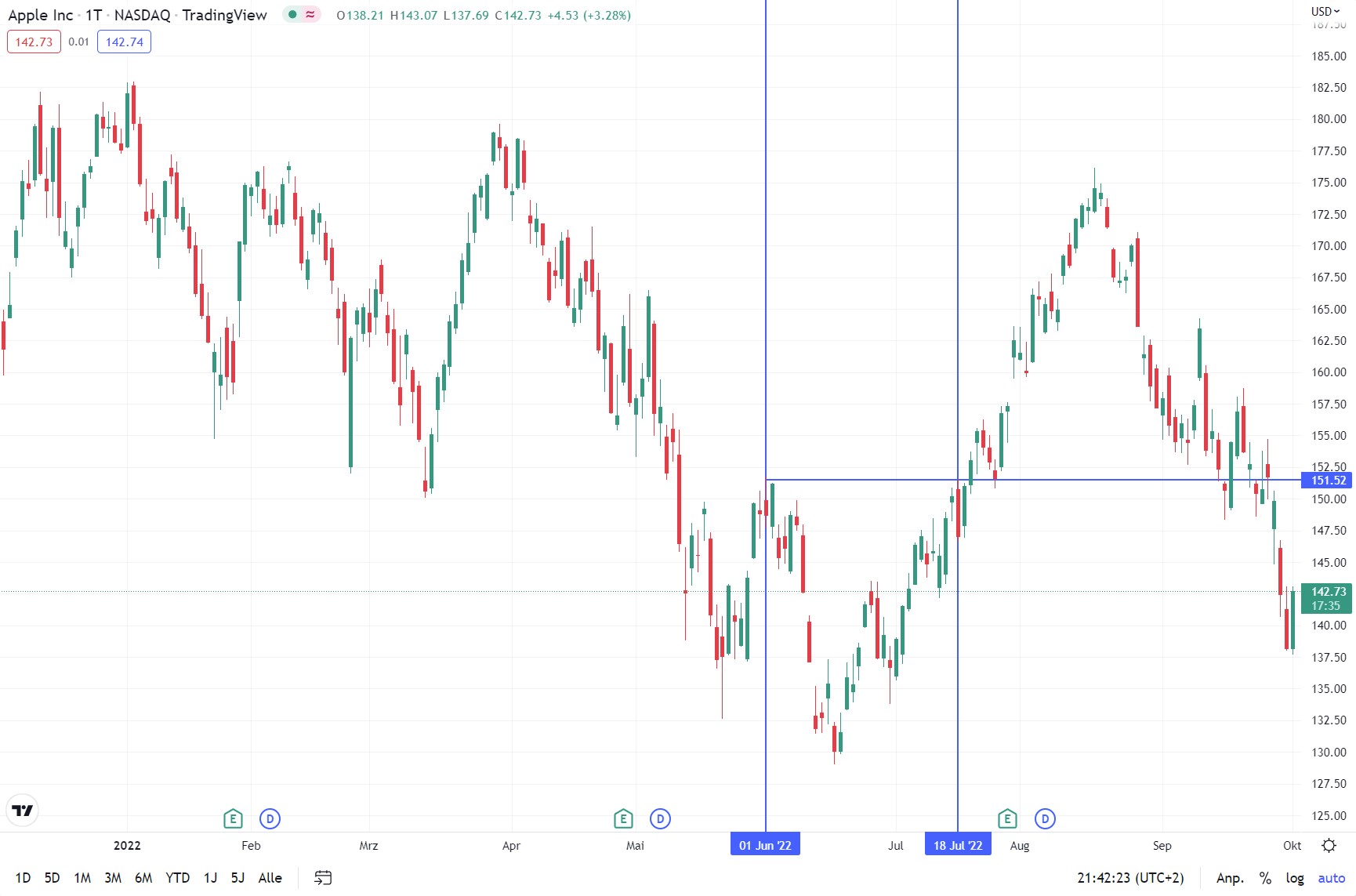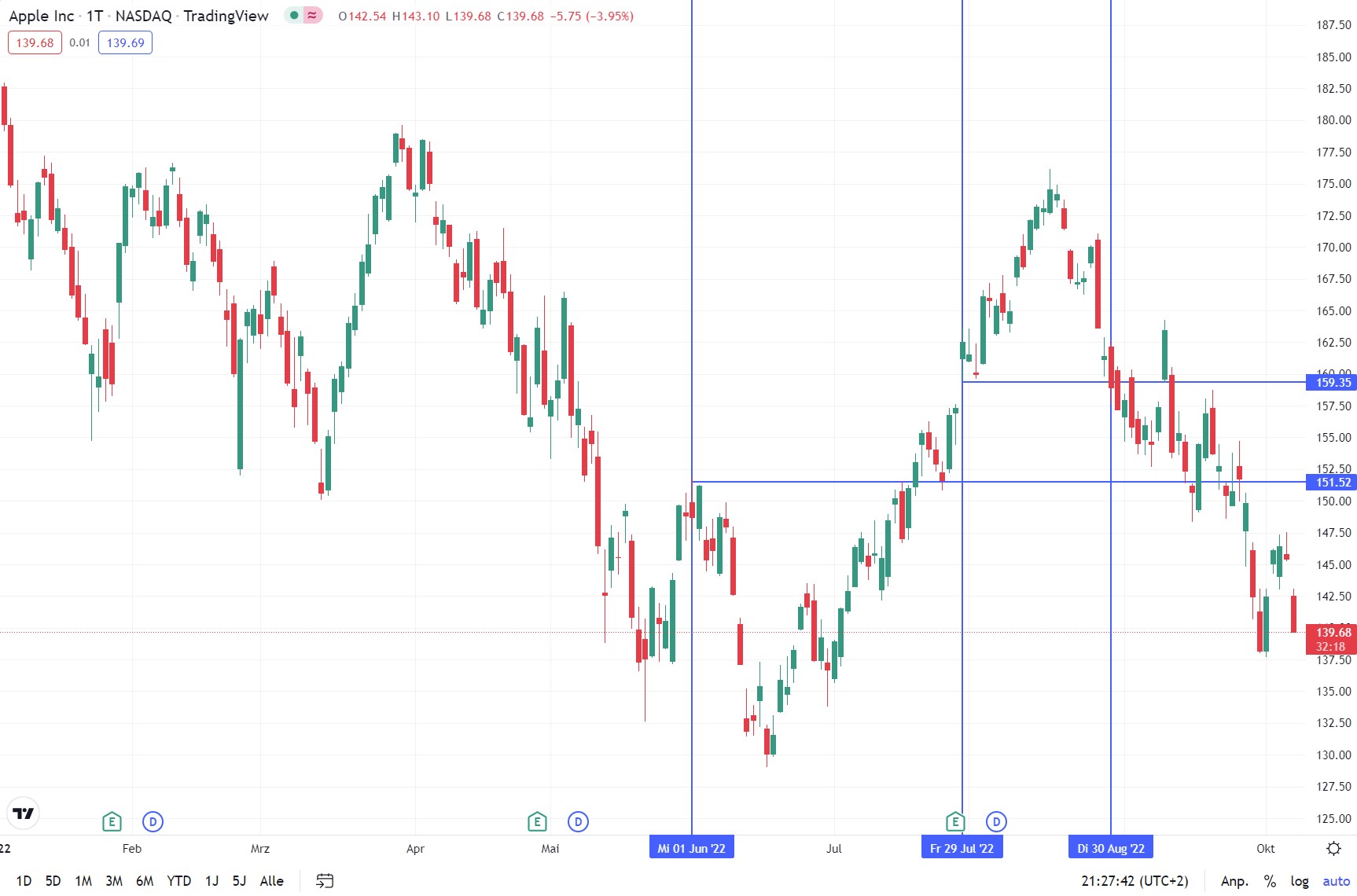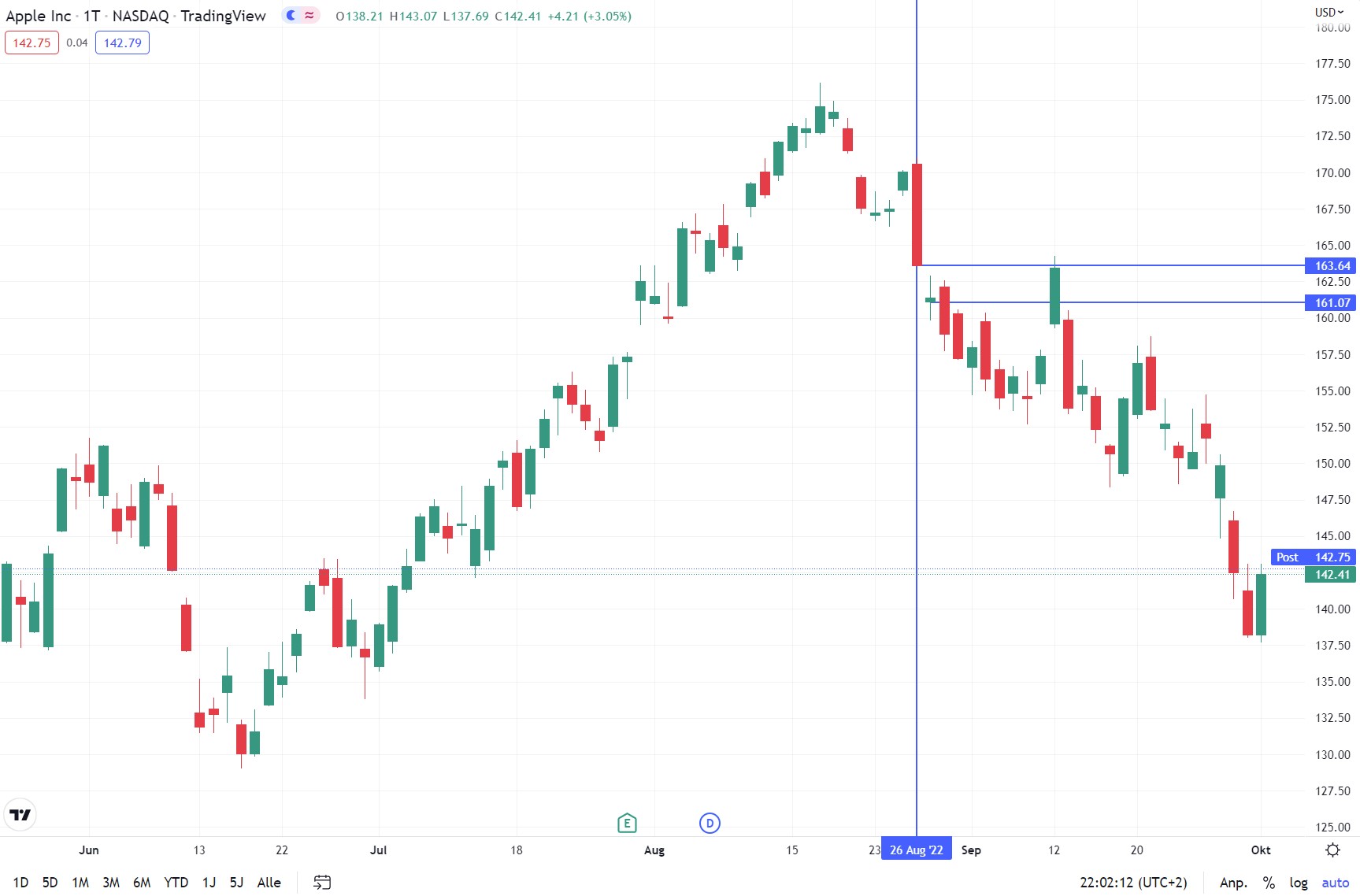You want to know what exactly a Stop Order is. You are unsure how and when to use them.
A Stop Order allows you to protect your capital and grow it over the long term.
So it would be good if you could use a Stop Order safely, right?

Stop Order types
The Stop Order is divided into Stop Buy Order and Stop Loss Order (Stop Sell Order). Depending on whether you want to buy or sell, one or the other will be executed.
Other order types such as the Limit Order, Stop Limit Order or Trailing Stop Order are separate order types and are discussed in detail in the linked articles.
What is a Stop Order?
A Stop Order is an order that is executed as a Market Order from a certain price – i.e. at the earliest possible point in time.
You can apply this order type to any financial instrument (shares, futures, CFDs, ETFs, etc.). A Stop Order is placed as a Buy or Sell Order, i.e. a Stop Buy Order or a Stop Loss Order.
You can use them when you want to secure your position. In this case, you close your position with a Stop Sell or Stop Loss Order (Sell Order). Or you use them when you open a position in the direction of the trend. In this case, use a Stop Buy Order.
In this article you will learn how to use the Stop Buy Order when prices are rising or how to protect yourself against falling prices with the Stop Loss Order.
With futures and options there is the possibility to use the Stop Order in the opposite direction:
Open positions with a Sell Stop Order on falling prices or close them with a Buy Stop Order on rising prices.
What is a Stop Buy Order?

A Stop Buy Order allows you to open a position with the trend.
So, you use them when buying. When you buy with a Stop Buy Order, you set a specific stop price.
This must be higher than the current price. When your defined stop price has been reached, the position is opened.

What is a Stop Loss Order or a Stop Sell Order?

In trading slang one actually only speaks of Stop Loss. A typical question from a trader would be "Where is your Stop Loss?". Another trader's response might be “At the last low”.
A Stop Loss protects your account from unlimited losses and secures profits before prices plummet.
You use a Stop Loss Order (Stop Order Sell) when selling. The stop price you define must be below the current price. For example, you can set the stop 10 % below your purchase price, so that the risk is limited to 10 %.
When the desired stop price is reached, your position will be closed. If the price crash does not fall below your stop price, the Stop Loss Order will not be executed.
Then you can shift it to the higher, newly created low.
Selling a Stop Order works particularly well in trending markets. You can use it to secure your profits early on without having to follow the courses on a daily basis.
So, if you have open positions, you check them twice a month and place a Stop Loss Order. And you take the profits with you.

When should you use a Stop Loss?
In my opinion, always! Depending on your strategy, it is best to place the stop loss at the last or penultimate low.
What is the best Stop Loss?
I think it is best to set Stop Loss according to market technique. For this you use the last or penultimate low. If it's too hard for you to spot the highs and lows, you can use Larry Williams' PercentR (%R) indicator.
What are the disadvantages of a Stop Order?
A weakness of the Stop Order is that it converts into a Market Order. A Market Order is executed at the next possible price. However, the next possible course may look different than you expect.
The stock exchange is like a marketplace. It brings buyers and sellers together. If there are no buyers or sellers at a given price, then no deal will be made or a sale must be made at a lower price to get rid of the commodity.
Applied to the stock market, this means that if there is no order volume (no buyers) at your stop price (the price for which you want to sell your shares), there will be a price gap or slippage during the course of the day. Your order will be executed at a lower price than what you actually want.
The same occurs if your specified stop price is not reached directly, but is jumped over overnight with a price gap.

How can you bypass the disadvantages of a Stop Order?
The disadvantage of poor order execution (slippage) with a Stop Order can be avoided with a Stop Limit Order. Of course, this only works as long as there is volume in your limit course. If there is no trading volume at your limit price, or your limit price is skipped, this order will not be executed and you will keep your position.
Important NOTE
Stop Limit Order
It can happen that your Stop Limit Order is not executed. Therefore, I never recommend and never use the Stop Limit Order to close a position! I myself only use them to open a position.
How do you place a Stop Order with your broker?
With most brokers, you first choose whether you want to sell or buy a position. Then you select the order type – for example the Stop Order.
You proceed as follows when placing your order:
Choose a trading product, such as Apple stock or an S&P 500 ETF.
Indicate whether you are buying or selling.
Select Stop Order as the order type.
Determine the price, quantity and order validity.
Click "Place Order" or "Close Order".
Important NOTE
Stop Orders with a broker
Most brokers do not indicate whether it is a Stop Buy or Stop Loss Order, as this has already been defined with the previous selection (Buy or Sell).
With the selection 1. Sell and 2. Stop Order, the Stop Loss or Stop Sell Order results. With the selection 1. Buy and 2. Stop Order, the Stop Buy Order results.
The spelling, which comes from English, is therefore more correct:
Buy Stop Order = Stop Buy Order
Sell Stop Order = Stop Sell Order, Stop Loss Order
Difference Limit Order, Stop Order and Stop Limit Order
Stop Order and Limit Order are two different order types. Stop Limit Order is a combination of Stop Order and Limit Order and can also be selected as an order type with your broker.
Stop Order | Limit Order | Stop Limit Order |
|---|---|---|
A quote (Stop) | A market value (Limit) | Two price values (Stop & Limit) |
Buy: Stop price above the current price. | Buy: Limit price below the current market value | Buy: stop price above current price and limit price above stop price. |
Sell: Stop price below the current price. | Sell: Limit Price above the current price. | Sell: stop price below current price and limit price below stop price. |
With the Stop Order you can hedge your current position (sell) or | With the Limit Order you can take your profits in the direction of the trend (sell) or | Only use the Stop Limit Order to open a position (buy). |
build up in the direction of the trend when a certain value is exceeded (buy). | build up (buy) your position in a correction. | This allows you to limit your slippage to the difference between the stop and limit price. |
Slippage to your detriment often occurs. | Slippage to your detriment can never occur. | Slippage is limited, but there is also a risk that the order will not be filled if there is a large jump in price. |
